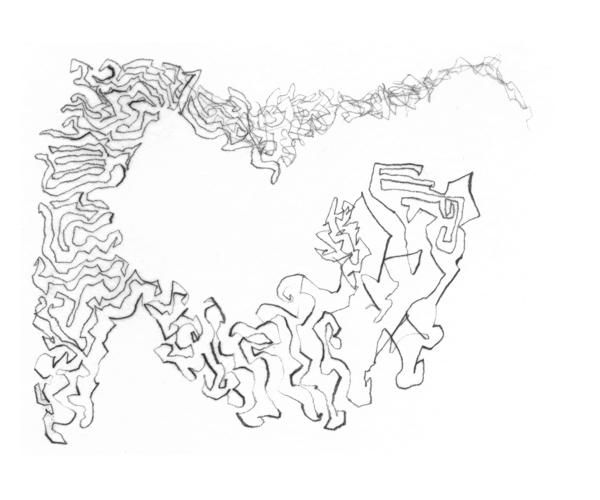
|
|
| 8.8.2014 |
Making "Hurrying" It happened sometime between Thanksgiving and Christmas in 1968. I was back from New Orleans and in kindergarden. The school had big easels, smocks, long brushes crusted in tempera paint, and sheets of newsprint. I was put in front of an easel without instruction and allowed to paint whatever I wanted. I felt the stress of staring at the proverbial blank canvas when the images of the mazes came rushing back to me. I had never been so certain of what I wanted to create. My mind went into overdrive with the excitement and planning. I knew what to paint! Perhaps this energy and the stress relief that accompanies mental clarity were what helped solidify this experience in my memory. There were a few colors, primaries and secondaries, and the brushes were waterlogged and sloppy. I remember strategizing. With no black or white paint, I intuitively chose the largest value range available - purple and yellow - plus I loved the color combo - purple and yellow were two thirds of the colors of Mardi Gras, the colors of LSU, my father's alma mater, and later the colors of my high school. My plan was this: I would put down yellow as the path of the maze and then fill in around it with purple for the walls. I also knew somehow that I had to draw the whole maze in yellow first because if I put a purple wall in the wrong place I wouldn't be able to cross it with yellow paint; the yellow was too thin to opaque the purple. Then I began painting and immediately realized the yellow was very hard to see by itself against the newsprint. I was in the flow and pushed on. I drew the paths of the maze in yellow with the brush, doing my best to see them by looking from various angles. Then I cleaned the brush, took up the purple and begin fill in in around the yellow lines. When I was almost done and could see the maze taking shape, I realized to my horror that one section of the yellow was isolated. I would have to cross the purple with the yellow! I finished the purple, cleaned the brush, waited as long as I could for the paint to dry and then made a short stab of yellow over the purple to finish the painting. You can still see this line in the painting - it is along the bottom just left of the center. The purple showed through as I expected which kind of ruined the perfection of my original vision but surprising things came from my willingness to make that move. First, the mark looked good on its own. Second, seeing that it looked good but that it was not part of my original plan raised a complex emotion; an unresolved state of mind. Was it okay? What could I do to accept this change when my expectations were not met? Could things be better than expected and still be okay? On several later occasions this mark plays a vital role in connecting me to the work. It is the only individual mark in the painting that I remember making. Is this an exception that proves a rule? And if so, what unspoken rules about how I should make a painting could my five year old mind have possibly thought up that would bring on such resistance? I don't know how tightly I constrained myself, I knew what had to be done to finish the work and I did it. What did happen that morning was my first taste of a beauty that lies beyond my own limits. |
| Previous Drawing | Home | Next Drawing |